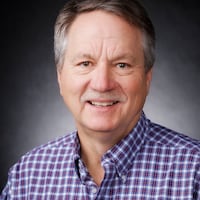She was one of 12 teachers and Holocaust center personnel from five states and the only one from Ohio who were selected to attend the program. Through lectures and visits to Holocaust sites, these educators gained a more profound understanding of the complex and tragic history of the Holocaust, she said.
When educators stand in “authentic spaces” it allows them to “teach it better to students” after what they saw,” she said. “It drives home why learning about this is so important.”
Lakota West principal Scott Laman said these type of personal development trips allow teachers like Booker to “relate to kids on a deeper level.”
Booker said every other summer she tries to attend a conference or seminar to expand her teaching stills.
“She talks the talk and walks the walk,” Laman said.
Booker serves on the advisory board of the Nancy and David Wolf Holocaust & Humanity Center inside the Union Terminal in Cincinnati.
Much of this year’s program concentrated of those who rescued Jews during the Holocaust. From 1941 to 1945, Nazi Germany and its collaborators murdered some six million Jews across German-occupied Europe, around two-thirds of Europe’s Jewish population.
If not for the efforts of some, the number of casualties could have been higher, Booker said.
“Ordinary people decided something was happening and it wasn’t right,” she said. “They decided, ‘I need to do something to help others.’ They couldn’t be a bystander.”
Booker, 36, said she learned about a group of workers in a brick factory who built walls to hide the Jews
“They saw the worth of other lives,” she said.
She said some students believe world events happened so many years ago, they don’t affect them. She hopes her experience in the program allows her to show the students the importance of world events.
The program was a high-level, intensive and immersive educational experience that included visits to concentration camps, ghetto sites and Holocaust memorials. Noted historian Robert Jan van Pelt, one of the world’s leading experts on the Holocaust, served as the accompanying scholar for the European Study Program.
The program began in Amsterdam where the group toured the Portuguese Synagogue, the Jewish History Museum, the Dutch Holocaust Museum, the Hollandsche Schouwburg, the Anne Frank House, the Frank family home and the Resistance Museum.
They then traveled to the Felix-Nussbaum-Haus and Bergen Belsen concentration camp before traveling to Flensburg, the home of the last Nazi Government; the Froeslev concentration camp; Gilleleje; Ramlosabrunn; Malmo; Ryvangen; Nivaa; Copenhagen and many other cities.
“As we continue to move further away from the Holocaust, it is more important to empower our educators to better teach their students about the Holocaust,” JFR Executive Vice President Stanlee Stahl said in a statement. “By visiting the places where these complex events occurred educators can better connect to what they are teaching making them more effective teachers.”
About the Author


